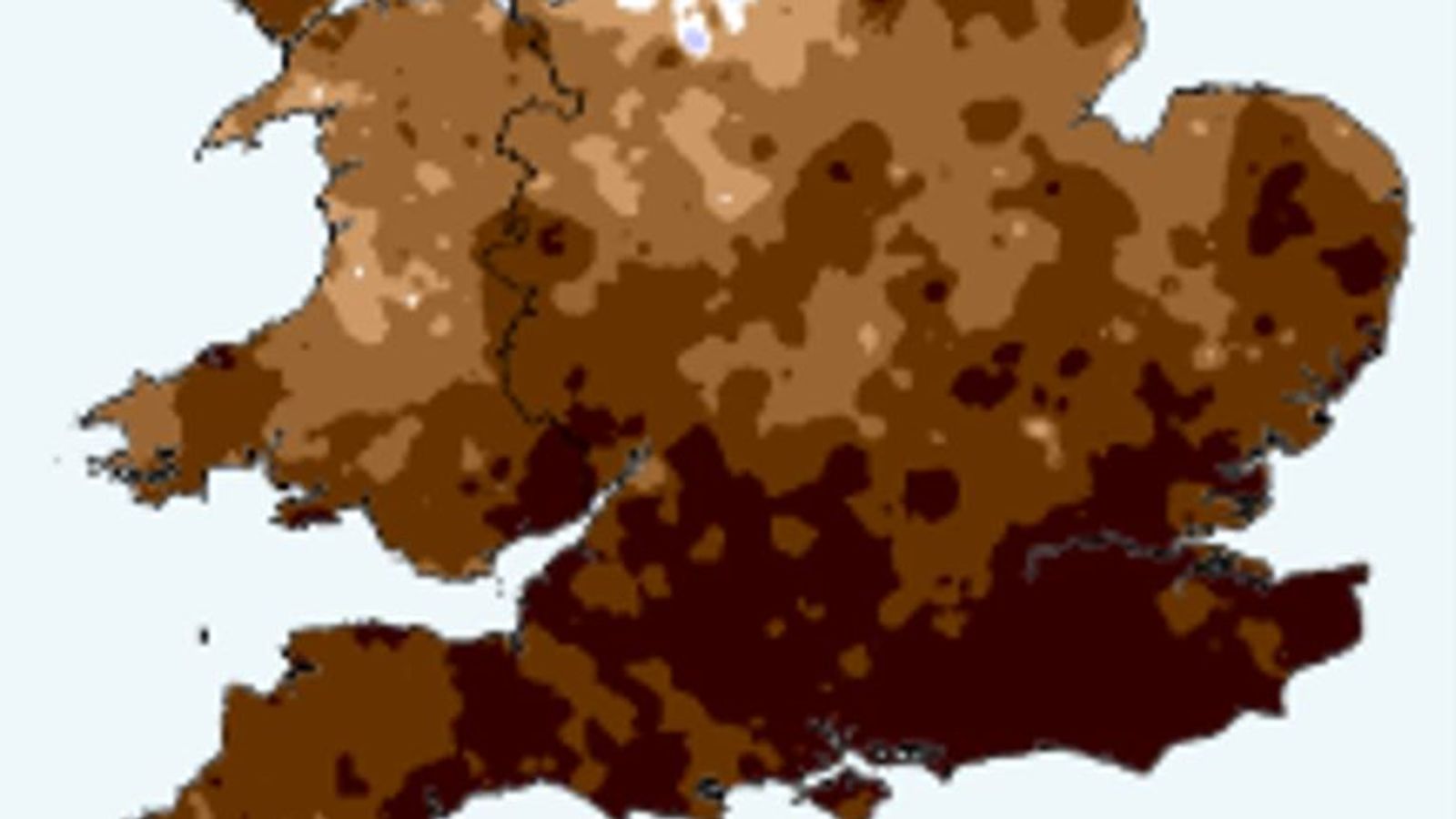This month is not yet over but so far it has been the driest July in England since 1911 and the second driest since records began in 1836, say weather experts.
Only 15.8mm (0.6 inches) of rain fell on average up to 26 July, according to the Met Office.
The agency says this is just 24% of the amount which would be expected in an average July.
Figures also show England has had the driest eight-month period from November 2021 to June 2022 since 1976, when the country struggled with severe drought.
Over that period, just 421mm (16.6in) of rain has fallen across England – less than three-quarters (74%) of the 1991-2020 average of 568mm (22.4in).
It comes as water chiefs are preparing for drought with officials at the Environment Agency (EA) transferring water to low running rivers, rescuing fish and reoxygenating water, while water companies are implementing the early stages of their drought plans.
And the Royal Meteorological Society told Sky News that drought was now “very likely” for the majority of the south of England and Wales.
What uses the most water in our homes, where does our water come from and what happens during a drought?
Record power price paid as London narrowly avoids blackout last week due to heatwave
Warm weather brewing could fuel another heatwave, Met Office says
The Met Office said at this stage in the month, the country would have expected well over three-quarters of the month’s rain to have already fallen in an average July.
As for the UK picture as a whole, the situation is a little better but this July so far is still the driest since 1984 and the eighth driest since 1836.
An average of 37.7mm (1.5in) of rain has fallen in the UK this month up to 26 July, says the Met Office.
Please use Chrome browser for a more accessible video player
There is still time for things to change slightly over the remaining days of the month.
But weather experts have warned there is little significant rain forecast for southern and eastern England, so there is not much chance of a big improvement in the next week or two.
Scotland has had closer to the average rainfall in the north and west, but there have been drier conditions in south and east Scotland.
Overall, Scotland has had 71% of the average rain for the month, Wales has had 39%, and Northern Ireland 43%.
The most extreme dry conditions are in East Anglia and southeast England.
There have also been above-average temperatures for much of this month, including heatwave conditions around 10-13 July and from 16 July, with exceptional heat during 18-19 July when temperatures soared above 40C for the first time on record.
Please use Chrome browser for a more accessible video player
‘Increasing trend towards hotter and drier UK summers’
Mark McCarthy, head of the Met Office National Climate Information Centre, said: “Met Office climate change projections highlight an increasing trend towards hotter and drier summers for the UK, with the driest regions anticipated to be in the south and east.
“While trends in summer temperature and heatwaves are very apparent in the climate records of recent decades, the large variability in our rainfall means that it is too soon to be able to detect the pattern in summer rainfall.”
Watch the Daily Climate Show at 3.30pm Monday to Friday, and The Climate Show with Tom Heap on Saturday and Sunday at 3.30pm and 7.30pm.
All on Sky News, on the Sky News website and app, on YouTube and Twitter.
The show investigates how global warming is changing our landscape and highlights solutions to the crisis.







